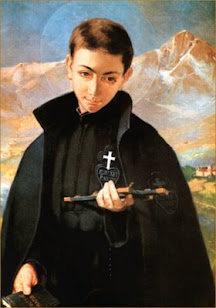The current abbot felt drawn to discover more about Saint Thorfinn, of which there was little recorded in the monastery’s records. Speaking with the oldest remaining monk, Father Walter de Muda, the abbot learned that Thorfinn had been an exceptionally devoted brother—good, patient, generous, and firm in his confrontation of evil. In fact, Father Walter had written a poem about the fallen abbot—written on fragile parchment—which had been placed in the tomb with Thorfinn.
The abbot searched for the poem, finding it in pristine condition in the tomb, not having suffered the ravages of time. Taking this as a sign that the Lord wished Thorfinn to be remembered and honored, Father Walter was asked to record all he could remember about the holy man who had lived his life quietly. The monks—and soon others who heard of this discovery—began praying at Thorfinn’s tomb, and numerous miracles began occurring at his intercession!
| Ruins of Hamar Cathedral |
| Abbey at Ter Doest, built during the residency of Saint Thorfinn |
In our world today, we focus our attention on accomplishments and status—those who have money, power, and fame are generally the individuals that we emulate or admire. Saint Thorfinn reminds us that the Lord does not judge us by our accomplishments, but rather by our character and our hearts. Saint Thorfinn may have lived a quiet life, but it was one rich in love for the Lord, and service to his fellow man. While he did not attract much attention on earth, he did in Heaven, earning him the title of saint!
Year 2: Day 8 of 365
Prayer Intentions: Lives focused on the Lord, rather than worldly achievement.
Requested Intentions: Improved financial stability (A); Improved relationship with business partner (A); For employment (N); Reconciliation of a workplace relationship (R); Healing of son, cousin, and friend (L); Healing of a husband from cancer, end to medical problems (T); Freedom from persecution (E); Successful employment (R); Reconciliation of a marriage (M); Successful marriage, employment, healing (J); For a family struggling with a difficult situation (M); For family intentions (I); Reconciliation of a marriage (S); For blessings upon a family (R); Permanent employment (N); Successful employment (M); Healing of a father following stroke (S).




0 comments:
Post a Comment
Thanks for leaving a comment. If you wish to submit a prayer request, however, please do so above, using the "Contact" tab.